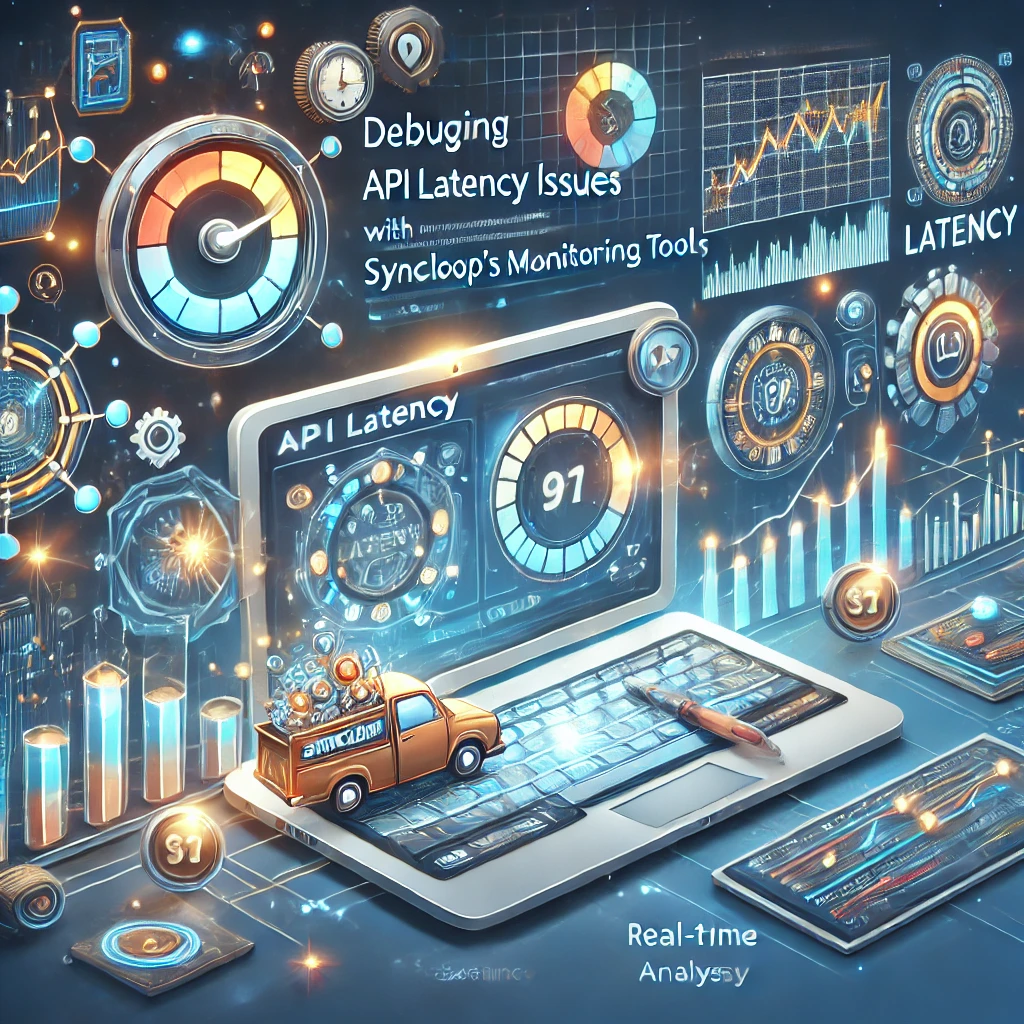Debugging API Latency Issues with Syncloop's Monitoring Tools

Syncloop provides a suite of advanced monitoring tools to help developers identify, analyze, and address latency issues effectively. This blog explores how Syncloop simplifies the debugging process for API latency and shares best practices for maintaining optimal API performance.
Common Causes of API Latency
- Network Bottlenecks: Delays caused by network congestion, routing issues, or insufficient bandwidth.
- Inefficient Code: Suboptimal backend logic or database queries increasing response times.
- Overloaded Servers: High traffic or resource-intensive processes overwhelming servers.
- Caching Misconfigurations: Missing or stale cache entries leading to redundant processing.
- Third-Party Dependencies: Slow responses from external APIs or services integrated into the workflow.
How Syncloop Simplifies API Latency Debugging
1. Real-Time Monitoring
- Use Syncloop’s dashboards to track API latency metrics, including response times, error rates, and traffic patterns.
2. Detailed Logs
- Analyze request and response logs to identify bottlenecks in API workflows or backend processing.
3. Traffic Analysis
- Monitor API traffic to detect anomalies or high-traffic endpoints causing delays.
4. Performance Metrics
- Track granular metrics such as query execution times, server CPU usage, and memory utilization.
5. Error Identification
- Detect and resolve latency-inducing errors, such as timeouts or misconfigured endpoints.
6. Load Testing and Simulation
- Simulate high-traffic scenarios to validate API performance and identify potential bottlenecks.
7. Dynamic Configuration
- Adjust timeouts, caching rules, or rate limits in real time without redeploying APIs.
Benefits of Using Syncloop for Latency Debugging
1. Faster Issue Resolution
Identify and fix latency problems quickly with Syncloop’s real-time monitoring and detailed logs.
2. Enhanced API Performance
Optimize workflows and backend processes based on actionable insights.
3. Proactive Monitoring
Detect latency issues before they impact users with automated alerts and notifications.
4. Scalable Solutions
Prepare APIs to handle high traffic and demand surges without performance degradation.
5. Simplified Workflow
Streamline debugging with intuitive tools and a centralized platform for performance analysis.
Real-World Applications of Latency Debugging
1. E-Commerce Platforms
- Reduce checkout delays by optimizing payment gateway and inventory APIs.
2. Social Media Apps
- Improve user engagement by ensuring real-time updates for feeds and notifications.
3. Financial Services
- Minimize latency for transaction APIs to ensure accurate and timely processing.
4. IoT Systems
- Enhance real-time device-to-cloud communication by identifying and resolving latency in data pipelines.
5. Healthcare Applications
- Ensure prompt API responses for patient records and diagnostics, critical in healthcare systems.
Steps to Debug Latency Issues with Syncloop
Step 1: Monitor Metrics
- Use Syncloop’s dashboards to track response times and identify endpoints with high latency.
Step 2: Analyze Logs
- Examine detailed logs for slow queries, redundant processes, or errors causing delays.
Step 3: Conduct Load Testing
- Simulate heavy traffic conditions to validate API performance under stress.
Step 4: Optimize Workflows
- Refactor inefficient backend processes, queries, or integrations contributing to latency.
Step 5: Configure Caching
- Implement or optimize caching strategies to reduce redundant data processing.
Step 6: Monitor in Real Time
- Continuously track performance metrics and adjust configurations dynamically as needed.
Best Practices for Reducing API Latency
- Use Caching Wisely: Cache frequently requested data to minimize redundant backend calls.
- Optimize Queries: Streamline database queries to reduce execution times.
- Monitor Continuously: Use real-time tools to track and address latency trends proactively.
- Leverage Load Balancers: Distribute traffic evenly across servers to prevent overloads.
- Document Timeouts: Define and enforce realistic timeout values for API requests.
- Plan for Scalability: Design APIs to scale dynamically with increasing traffic.
Conclusion
API latency can disrupt user experiences and hinder application performance, making it essential to identify and resolve issues quickly. Syncloop’s monitoring tools provide real-time insights, detailed logs, and dynamic configurations to help developers debug and optimize APIs efficiently.
Whether managing e-commerce platforms, IoT systems, or financial services, Syncloop equips you to deliver high-performance APIs that meet modern demands. Embrace Syncloop to reduce latency, enhance user satisfaction, and achieve operational excellence.
A conceptual visualization of API latency debugging powered by Syncloop, showcasing real-time monitoring, performance dashboards, and traffic analysis workflows.
Back to Blogs